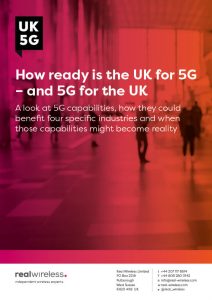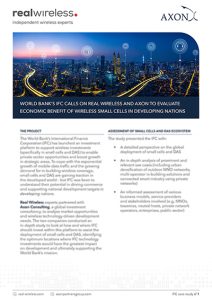Wi-Fi has always been the wireless connectivity of choice when it comes to reaching the most people with the lowest cost. Practically every laptop, tablet and smartphone relies on it as their main or only connection to the internet and cloud services. If you want to reach everyone with wireless connectivity – you must provide a Wi-Fi service.
The adoption of Wi-Fi throughout the years has encouraged a fast-paced evolution of the standards to keep up with increasing demand in what was, until now, a somewhat limited license-free spectrum. With more mobile and Wi-Fi connected IoT devices appearing on a seemingly daily basis, Wi-Fi services are coming under even more pressure.
The global lockdowns have done nothing but exacerbate this further. Video conferencing and other real-time services demand high bandwidth, low latency and consistent performance. Home workers using all corners of the home required better coverage. The increase of Wi-Fi enabled IoT devices calls for better airtime fairness and power management to ensure each device gets just the right service quality and no more.
So where are we now?
Beamforming and Wi-Fi mesh are well established technologies and for the most part, played an important role in improving the coverage in homes (although they have increased the amount of RF interference through the increased reach of APs).
- Wi-Fi 6 is rolling out fast and has all the enablers to improve airtime fairness, power management and deliver more deterministic and sustainable quality of service.
- The 6GHz band is opening up around the globe to provide more spectrum, initially indoors but eventually for managed outdoor usage as well.
- Security and authentication have improved through the release of WPA3 and Enhanced Open (read about it in this Aruba paper), and the development of OpenRoaming which allows organisations to become identity providers and enable seamless authentication throughout their Wi-Fi footprint.
- And Wi-Fi 7 (802.11be) standardisation is well underway to bring wider channels (with aggregation), more spatial streams, co-ordinated APs and Time-Sensitive Networking enhancements for low-latency real-time traffic.
So what does this mean for venue Wi-Fi
Work From Home (WFH) has raised the bar on what people expect from Wi-Fi. Thanks to mobile operators, ISPs and all of the Wi-Fi vendors, the refresh cycle of Wi-Fi equipment within the home has accelerated. Coupled with the increased availability of Fibre-to-the-Premise (FTTP), expectations of the end user are now at the higher end. As WFH transitions to Work from Anywhere, that same experience should be delivered.
People who have purchased Wi-Fi 6 capable devices will want to enjoy the benefit of that better experience wherever they go, consequently demanding more bandwidth.
With these expectations in mind, venues now need to consider whether they can offer the deterministic, reliable and fast Wi-Fi services consumers have come to expect.
Is it the right time for an infrastructure refresh?
Upgrades and refreshes are big decisions, and they are never easy either! Particularly now, with so much going on in the Wi-Fi world, a venue would be forgiven for struggling to understand all the options and calculate the business case.
The starting point really comes down to the experience which a venue wishes to offer once public locations start to fill up again. The impact to the high street means that retail is becoming more experience led, and the omni-channel delivery of that experience should be front of mind.
Interestingly, there is some low hanging fruit available to enhance existing installations.
- Security enhancement is usually a software upgrade. Venues can ask their equipment provider about supporting WPA3 and Enhanced Open
- Captive portals are old and long in the tooth.
- If there must be a captive portal, then following the latest Apple guidance on modernising the captive network is a good start.
- There is an opportunity for a venue to remove the (generally unwanted) captive portal experience and support federated authentication through OpenRoaming. Furthermore, the venue can also become an authentication identity provider, seamlessly connecting customers to Wi-Fi within their footprint but also throughout partnering locations, keeping customers in touch with the brand for longer. This is seen to be a positive step towards better user engagement and retention.
Beyond this, there is a plethora of considerations around the services which need to be delivered, the types of devices customers are expected to have, the introduction of sensors and IoT in the venue and the age of current equipment. The decisions of when to upgrade and what technology to go for are hard and being new, there are not many tried and tested networks out there which can be analysed for effectiveness and ROI. Furthermore, as with many new technologies, there are still teething issues with device interoperability and network tuning.
Upgrading Wi-Fi needs to happen, as Wi-Fi 6 and the use of higher band spectrum will eventually prevail. The question is: when is the right time to do this, and what is the most economic route to achieving this?
At Real Wireless, we keep ourselves at the forefront of these technological evolutions and support our clients in making these complex decisions. Our relationships with Wi-Fi vendors and the standardisation community keep us on the pulse while our wide-ranging expertise covering the development of business cases, RF planning in venues, vendor management and user experience delivery puts us in the perfect position to guide our clients through their next Wi-Fi upgrade.
















